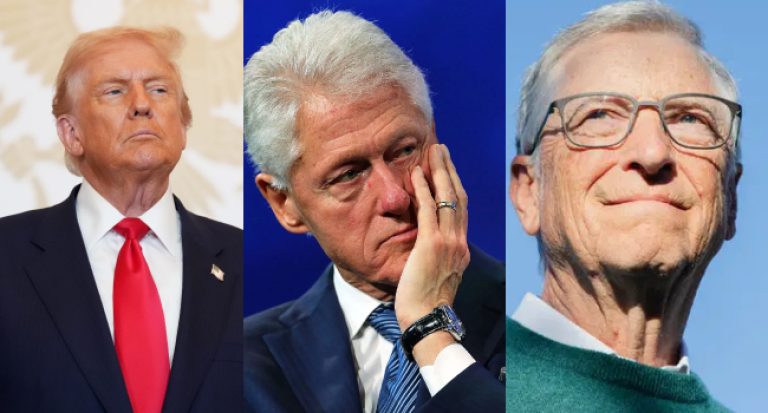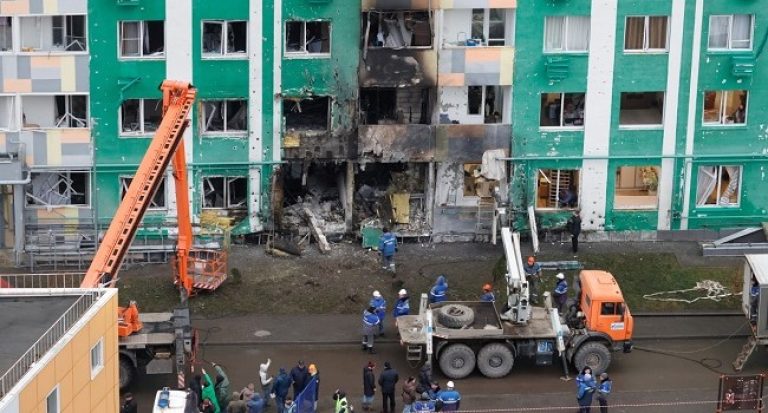For quite a while, the skyrocketing price of Liquefied Petroleum Gas, known as cooking gas and its crushing effects on Nigerians has been on the front burner. There appears to be mistrust and heightened fear of alleged complicity between the Federal Government, importers and depot owners to consistently monopolise the sector for good profit margin
Untying a bundle of firewood bought several streets from her residence, Mama Ada, an akara (bean cake) seller in Oke-Afa, Isolo, Lagos, arranged the logs under a stone stand and sprinkled kerosene on them in preparation for the day’s business.
After several unsuccessful attempts to ignite a flame, she bent, puffed and blew air into the smoking logs. Her painstaking efforts to kindle the fire finally paid off as tiny, yellowish flames sprouted and gradually engulfed the tips of the firewood.
With red eyes glistening with tears, the mother of five took steps back and wiped sooth-stained hands on her flowing gown.
Of late, Mama Ada can no longer afford to fry akara with cooking gas, as she observed that the high cost was eating into her profit.
Stacked not far from where she stood was an empty 12.5kg cylinder of gas and an industrial cooker. She took a sweeping glance at the cooking equipment and shook her head in despair.
Bemoaning the continuous spiralling cost of LPG, the woman told our correspondent that she switched to using firewood when the price of 12.5kg of gas rose from N4,500 to N6,000.
Samson, a resident of Peter Agha Street, also in Oke-Afa, fumed with palpable anger after paying electricity bill of N28,000, which he was levied by the Ikeja Electric for the month of July.
The astronomical rise in the price of LPG had seen him and several others in the neighbourhood making frequent use of electricity for cooking, thus, tripling their monthly energy consumption and bills.
“We can’t continue like this. This is crazy,” he said in exasperation, adding, “My bill and that of my neighbours were hiked from N11,000 to N28,000 without any prior notice. We can no longer afford cooking gas. These are trying times.”
Out of reach of the common man
These two dire scenarios are typical representations of the anguish and helplessness presently faced by several Nigerians.
From the East to West, from the North to South, it has been the same cry of disenchantment from bewildered Nigerians as the price of cooking gas continues to become pathetically expensive.
Presently, the price has risen to a record high of N500 per kilogramme, which according to the National Chairman of the Liquefied Petroleum Gas Retailers Branch of NUPENG, Mr Chika Umudu, is over 70 per cent hike.
It was gathered that gas plants and retailers in Lagos and other parts of the country now refill 12.5kg cylinder and 50kg of LPG for N6, 000 and N24,000, respectively This is even as 3kg and 5kg cylinders are refilled for N1,500 and N2,500.
Alleged complicity
Major stakeholders in the sector allege that importers, depot owners and the Federal Government were complicit in the continuous rise of LPG price through price-fixing, reintroduction of Value Added Tax, exorbitant landing cost and levies as well as dollar scarcity and devaluation of the naira.
Based on findings, naira devaluation and foreign exchange scarcity, to a great extent, have adversely affected LPG pricing, which is denominated in dollars.
According to Umudu, the country’s high dependence on importation of LPG plays a major role in the price hike, noting that as long as the dollar was appreciating against the naira, the price of cooking gas would keep increasing.
Presently, the official exchange rate of a dollar to the naira is 410.25, while it is 517 at the parallel market.
In May, the Central Bank of Nigeria devalued the naira by 7.6 per cent in an attempt to migrate towards a single exchange rate system.
The CBN replaced the fixed official rate of N379 to a dollar and adopted the more flexible NAFEX exchange rate of N410.25 per dollar.
Based on reports, the NAFEX, which acts as a spot rate, was introduced in 2017 to improve dollar liquidity and encourage inflows from foreign investors exiting the country following the 2016 economic crises.
Umudu noted that as long as the dollar continues to appreciate and importers are most times forced to buy from the parallel market, the price of LPG, which began to increase in December 2020, would get to an all time high.
Global LPG price/price fixing
Though LPG is an internationally traded commodity influenced by international prices, the international benchmark for the cost of the commodity in Nigeria is the Nigerian Liquefied Natural Gas Contract Price, also commonly called the NLNG CP.
The NLNG CP is said to change on a monthly basis, forcing price reviews at least one or three times per month.
It was learnt that since the international price for LPG is denominated in US dollars, the naira exchange rate affects the price of the commodity locally, as the rates change numerous times per day, thus setting the tone for possible price fixing by importers and depot owners.
Also, as much as LPG is produced locally, it has to be bought with US dollar that keeps rising against the naira, thus, also increasing the cost at which it is bought by marketers and sold to end users.
According to GlobalPetrolPrices.com, an energy platform, as of August 23, 2021, the average price of LPG around the world was 0.74 dollar per litre.
The platform, however, noted that there were substantial differences in prices among countries, adding that as a general rule, richer countries had higher prices, while poorer countries and those that produce and export natural gas, a category which Nigeria falls into, had significantly lower prices.
“The differences in prices across countries are due to the various taxes and subsidies for LPG. All countries have access to the same natural gas prices of the international markets, but then decide to impose different taxes. As a result, the retail price of LPG is different,” it stated.
The Executive Secretary, Nigerian Association of Liquefied Petroleum Gas Marketers, Bassey Essien, bemoaned the fact that Nigeria depended largely on LPG importation to meet domestic demand.
He said the country was getting a paltry 350,000 metric tonnes of LPG from its liquefaction company, the NLNG, which is co-owned with the nation by three international oil companies, while the actual domestic demand stands at 1.2 million metric tonnes.
He revealed that over one million metric tonnes of gas were consumed by Nigerians in 2020, with about 65 per cent of the product imported by marketers.
“The shortfall is made up through importation. The implication is that the importers will embed expenses incurred into the price it sells LPG to the marketers at the depots and terminals. This is then passed on to end users of the product,” Essien stated.
Largest gas producer, yet in deficit
Based on reports, the NLNG is a major player in the global LNG business. It was incorporated as a Limited Liability company on May 17, 1989, to harness Nigeria’s vast natural gas resources and produce LNG and Natural Gas Liquids for export.
According to a report by the NLNG, the country is blessed with abundant reserves of both associated and non-associated gas, estimated to be in excess of 202 trillion standard cubic feet.
The World Factbook, a reference resource produced by the Central Intelligence Agency, stated that Nigeria ranks ninth in terms of proven natural gas reserves in the world after Algeria. It was estimated that the reserve would last for over 100 years. Till date, the NLNG in Bonny remains the major producer of LPG in Nigeria, and produces close to 22 million metric tonnes a year.
However, despite having the capacity to produce such quantum of LPG, it allocates only 350,000 metric tonnes to the Nigerian domestic market that requires about 1.2 million annually, while the rest is exported.
Nigerians are wondering why the NLNG cannot fully supply the domestic market with the volume it requires.
It was reliably gathered that the LPG was being imported back into the country to make up for the shortfall meant to feed domestic demands.
Presently, there are 12 LPG depots in the country. Not long ago, an automated terminal built by Techno Oil, with a storage capacity of 8,400MT, meant to increase Nigeria’s storage capacity to 69,968MT, was inaugurated at the LPG terminal in Kirikiri, Lagos.
The NLNG plant at Bonny Island has six processing units called trains, with a total processing capacity of 22 million tonnes a year and with up to five million tonnes of natural gas liquids.
According to the NLNG, the engineering, procurement and construction of Train 7 was awarded to a consortium on May 13, 2020, adding that when completed, it would raise the company’s production capacity by 35 per cent from the current 22 million tonnes to about 30 million tonnes per annum, and also increase foreign direct investment by $7bn in five years.
Despite the abundant LPG reserves and gigantic production plans, Nigerians have expressed dismay over why a country so richly blessed in gas can be so plagued by two evils – skyrocketing prices and scarcity.
We pay more to buy LPG – NALPGAM
As of July, it was gathered that members of NALPGAM bought 20MT of LPG for N7.5m from depot owners, but that changed in August, as the same quantity was sold to them for N8m.
Speaking on this, Essien expressed concern that the cost would be borne by end users, especially the low and medium income earners, except steps were taken by the Federal Government to ensure that the price remained stable.
He described the high cost of cooking gas as disheartening, adding, “It is unbelievable to imagine that six months back, NALPGAM members bought 20MT of LPG for less than N4m. We can’t continue to allow Nigerians to suffer due to this factor.”
Essien alleged that those benefiting from the price increase were mostly the terminal and depot owners, who change prices on hourly basis.
He said, “You can buy 20MT for N7.5m in the morning, only to buy for N8m in the evening. By the time the marketers buy, they will have to pay for the cost of transporting the LPG bought for N8m to various destinations, and that costs between N450,000 and N600,000, depending on the distance.
“Finally, the 20MT of LPG will end up costing N8.6m. This is the reason why the cost of cooking gas will keep increasing. Petrol is deregulated, but we can’t understand why the government doesn’t want to deregulate the gas sector and still not make provision for the sector to thrive.”
VAT burden on LPG
Essien said it was disheartening that Nigeria produces LPG in excess and exports it, while dealers go outside to import the same product into the country for consumption by the domestic market.
He noted that the Federal Government removed Value Added Tax on imported LPG and had it gazetted in 2019, only for it to be re-introduced in 2021.
He warned that Nigerians might soon end up paying more than N10,000 for a 12.5kg of cooking gas.
“Presently, 7.5 per cent VAT is charged on imported gas. We import to augment the 350,000MT allocated to the domestic market by the NLNG. This, including other payments like landing cost, demurrage, among other things, keeps pushing up the cost of LPG to N8m. The government should rethink the imposition of VAT on LPG importation,” Essien said.
For Umudu, the reintroduction of VAT on imported cooking gas was shocking, especially at a time Nigerians were lamenting not being able to afford the product.
He said, “If the government wakes up suddenly and decides that it wants more revenue and imposes VAT on a product that has gone up by about 70 per cent in the last one year, then it leaves a lot to be desired. When there is a problem, the last platform the masses approach for help is that of the government.
“It is also possible that other investors at higher levels, maybe the multinationals and depot operators, who are businessmen, also took advantage of the situation. I don’t have data to back that. However, I will still blame the government.”
It will be recalled that on July 11, 2005, a presidential directive was issued to remove VAT on LPG. It was, however, not implemented until 2019 by the regime of the President, Major General Muhammadu Buhari (retd.), as a way to increase domestic utilisation.
Defending the VAT reintroduction, the Director, Department of Petroleum Resources, Sarki Auwalu, said it was done to attract investments to local gas production. He explained that removing the 7.5 per cent VAT on LPG importation discouraged potential investors in the upstream sector and amounted to double losses for the government.
Price fixing allegation
Essien claimed that depot owners were the ones mostly benefiting from the rising cost of LPG, as they indirectly engage in price fixing. He maintained that the 7.5 per cent VAT was not enough to drive the price of 20MT of LPG from N3.5m in January to N8m in August.
He said, “They have hidden the actual price of LPG from everybody, including the price at which the NLNG sells to them. If gas is imported and sold at N10 and the locally sourced product is still sold for N10, then, something is wrong.
“Also, what the depot owners do is to sell both the locally sourced LPG from the NLNG and the one imported into the country at the same price. Even the locally sourced LPG from Ologbo, Umutu and Port Harcourt is still sold at the international price. It is only for the LPG that depot owners fix the price per minute. Three different prices could be fixed in a day.
“Still on the VAT, how much is the Federal Government making from a paltry 350,000MT of LPG allocated to the domestic market that it can’t let go? If the government can subsidise petrol, why is it putting VAT on gas? We are still questioning the rationale behind that decision. The LPG is not subsidised, meanwhile VAT is reintroduced and people are expected to embrace its use to curb GreenHouse Gases emission, deforestation and other climate change related ills.”
Dumping of cooking gas
As it appears, the skyrocketing price is gradually stalling the Federal Government’s resolve to deepen LPG penetration in the country, which seeks to create a healthier life for Nigerians by providing access to a cleaner source of energy for cooking, domestic uses and transportation.
This development, many industry watchers believe, is inconsistent with the Federal Government’s plan to encourage the LPG expansion programme.
While some end users, especially housewives and low-income earners, are left with no choice but to gradually adapt to the situation by squeezing out as much, most rural dwellers and those in the hinterland that rely on the product for business have been forced to abandon their gas cylinders for firewood, charcoal and sawdust. This is in spite of the inconveniences and health hazards associated with their use.
The users see the new price regime as forcing them to swallow bile in an already distressed economy.
Investigations revealed that there had been a sharp decline in the number of LPG users in the country due to rising cost.
Umudu revealed that in the past five years, LPG use increased exponentially among rural dwellers and those in the hinterland, but that lately, there had been a drastic reduction in the number of these particular end users due to affordability challenges.
This development was confirmed by Essien, who wondered how a family of five, with an income of N50,000, would survive after purchasing two 12.5kg of LPG at N12, 000 for cooking in a month.
LPG full domestication, key
Essien called for the full domestication of LPG, noting, “What this means is that the NLNG should give the domestic market the required 1.2 million metric tonnes and export the rest as it produces 22 million tonnes, instead of exporting the same, only for the country to import it back.
“That is all we have been saying. The government is not listening; the NLNG is not listening and nobody is listening. The association is wondering if the government has abandoned Nigerians to their own fate.
“We are not saying come and regulate the sector now. What we have been hammering on and which was part of the demands we took to the National Assembly, is for the full domestication of the LPG sector in Nigeria. People are running back to firewood and charcoal for cooking. There is a collaboration to deprive Nigerians of the abundant natural gas in the country.”
Umudu, however, believes that only an element of chance can curb the incessant rise in the LPG price.
He said, “The government that we should fall back on appears not to be interested in what is happening. So, I expect natural development that will influence the economy positively. Maybe, the value of the naira may appreciate and the price of petroleum products, including LPG, will drop in the international market.
“Those are the factors I look up to now for relief. I will not expect anything from the government that in the last one month closed its eyes to the people’s suffering and introduced VAT on the product.”
Dangerous, non-eco friendly alternatives
Like Mama Ada, many Nigerians who have switched to what they consider to be more affordable means of cooking – firewood, charcoal and sawdust – stand the risk of suffering from several debilitating health conditions.
According to the International Energy Agency, Nigeria is among the biggest users of solid fuel for cooking, with over 120 million of its citizens relying on firewood and charcoal.
Based on a 2013 World Health Organisation report, 98,000 Nigerian women die each year from the use of firewood, with thousands more at risk of serious health problems.
“After malaria and HIV/AIDS, smoke is the biggest killer of mostly women and children. This has cost poor families and institutions money that could be put to better use on education, health and nutrition,” it stated.
The WHO noted that indoor smoke from solid fuel remained one of the leading causes of avoidable deaths and ill-health worldwide, with women mostly affected because they often cook for their families and spend a lot of time in smoky kitchens.
It revealed that close to four million people die prematurely from illnesses attributable to household air pollution from inefficient cooking practices using polluting stoves paired with solid fuels and kerosene.
The WHO further reveals that household air pollution causes non-communicable diseases that include stroke, ischemic heart disease, chronic obstructive pulmonary disease and lung cancer, adding that close to half of deaths due to pneumonia among children under five years of age are caused by particulate matter (soot) inhaled from household air pollution.
In June this year, the Federal Government expressed concern that over 900,000 people were negatively impacted annually from the use of kerosene, firewood and charcoal in cooking across Nigeria.
To curb this dangerous trend, action plans were rolled out through the National LPG Expansion Plan, to ensure that the use of LPG for cooking grew exponentially to 90 per cent in the next 10 years.
Vice-President Yemi Osinbajo said effective implementation of the expansion programme would move Nigerians away from using cooking fuel that were harmful to health and the environment to cleaner and more efficient energy.
He noted that the government had put in place measures to ensure that cooking gas becomes affordable by providing five to 10 million gas cylinders in the next one year.
Despite the Federal Government’s effort to promote and attain cleaner energy, a report by the Global Alliance for Clean Cookstoves revealed that Nigeria ranks among the lowest LPG-consuming states in Africa, adding, “It uses less than 0.5 kilogrammes per capita, compared with 1.9kg in Cameroon, 3kg per capita in Ghana, 5.5kg in South Africa and 44.4kg in Morocco.”
The World Gas Statistics Data Meter stated that Nigeria ranks 38th in the world for natural gas consumption, while the United Nations Development Programme revealed that over 70 per cent of Nigerian households still relied on firewood for cooking.
However, in the words of most Nigerians, who presently feel deflated by rising inflation, unemployment and are still smarting from the crippling effect of the COVID-19 pandemic, providing cylinders without reducing the cost of LPG and increasing domestic supply makes absolutely no sense.
According to the International Energy Agency in 2017, without a substantial policy change, the total number of people lacking access to clean fuels and technologies will remain largely unchanged by 2030, and therefore hinder the achievement of the 2030 Agenda for Sustainable Development.
FG working on VAT imposition
While speaking with our correspondent, the National LPG Expansion Plan Programme Manager in the Office of the Vice-President, Mr Dayo Adeshina, admitted that the high cost of the product had adversely affected the expansion programme.
He, however, gave an assurance that it was a temporary development that would ease out once more volumes of the product come in.
He said currently, only 45 per cent domestic supplies of LPG were coming into the country and that the rest were from import.
“Because of the foreign exchange component to that, fluctuation is a big factor. Back in January, the product was about $250 or $260 per tonne. Today, it is about $650, which is a marked increase. We are trying to get more domestic sources. Obviously, the more volume we can bring in, that will also bring in competition,” he stated.
Adesina revealed that there was not enough domestic production of LPG, adding, “If there is, there won’t be the need for LPG importation. If there was gas everywhere, why would I need to import if it is produced and supplied? The truth is that we always have fragments here and there, and how much of it is being processed for LPG. These are the things we are working on to say people, who have gas reserves, should start to look at processing. It’s a very expensive venture to process gas, but there’s a market for it.
“In the years past, there was not enough market for LPG, which was the excuse given for it to be exported. Now, we are saying the market is here and there’s a need to reduce the export.”
He explained that it was not the same exported gas product that was being imported into the country as LPG. He said that the exportation of LPG had been ongoing for a long time, noting that the only thing that could be done was to reduce it because gas was needed by Nigerians.
Adesina said the Federal Government was not complicit in any plan to reap Nigerians off through price hike or VAT, assuring that efforts were ongoing to address it.
We are not complicit – NLNG
When contacted, the NLNG said it is not involved in price fixing or in LPG price increase.
Our correspondent was however, directed to the company’s website,
According to the site, NLNG had, over 10 years, intervened in the supply of LPG to the domestic market under the NLNG Domestic LPG scheme, adding that it helped to reduce the use of dirty fuel sources for cooking.
The company stated that it had stimulated growth in the industry by guaranteeing LPG supply, availability, affordability and enabling the development of a value network for a sustainable ecosystem towards a better Nigeria.
(Punch)





